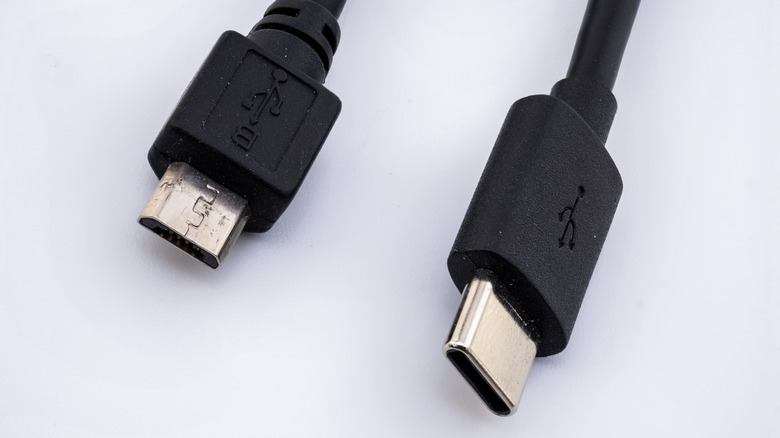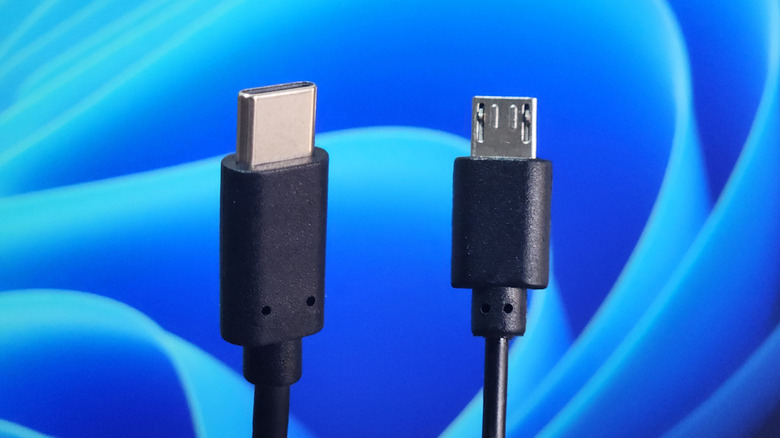Micro USB Vs. USB-C: What's The Difference?
USB has evolved significantly since it was first introduced in 1996. Even among the devices you own, you'll likely notice several different USB connectors. Two of the most common types are Micro USB and USB-C. These refer to physical USB standards, as opposed to communication standards like USB 1.0, 2.0 or 3.0. While Micro USB and USB-C are mainly used to charge devices and transfer data, there are a lot of differences between them.
Micro USB was first released in 2007, whereas USB-C made its debut in 2014. One major difference between the two is their physical appearance. The Micro USB connector is longer at the top and shorter at the bottom, so it can be inserted in only one direction. USB-C, on the other hand, has a flat, rounded shape. Thanks to this symmetrical design, USB-C connectors can be inserted in either orientation, so it's much easier to use.
How do they compare in terms of performance?
In terms of speed, Micro USB can transfer data at rates of up to 480 Mbps, although some newer cables using USB 3.0 can support up to 5 Gbps. USB-C is much faster and offers data transfer speeds of up to 10 Gbps, while newer cables using USB 4.0 can reach up to 40 Gbps.
Another area where USB-C outshines Micro USB is charging capacity. Micro USB supports power output of up to 12W, which is quite slow. Compared to this, USB-C can go up to 240W. These higher power outputs make USB-C ideal for charging laptops.
Micro USB can be typically found in old smartphones, tablets, cameras, printers, power banks and other smaller electronic devices. While it's not as popular as they once was, you'll still find it on some modern-day devices. USB-C, on the other hand, is widely used, thanks to its advanced capabilities. It's also due to lawmakers around the world requiring manufacturers to use a common USB connector in portable electronic devices. As a result, you'll find USB-C on Android, iPhones, laptops, headphones, speakers, gaming controllers, flash drives, and many other gadgets.

